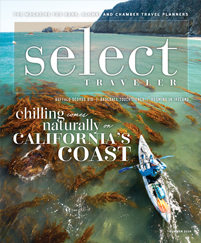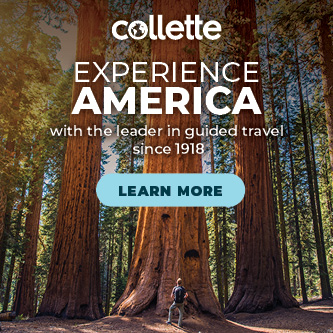Some loyalty group travel programs sell out every trip, raise nondues revenues and grow to become key branding vehicles for their parent organizations. Others peter out after planners offer a few tours they find enticing but that gain no interest from members.
What makes the difference? Many successful planners treat their travel program as a business in its own right rather than as an afterthought. Knowing the ins and outs of business marketing can help this goal.
One popular marketing theory that can help travel planners create and market their tours is known as the Seven P’s of Marketing. These seven tactics can enhance tour programs in broad, conceptual ways down to the minute execution details. Throughout 2019, we will cover each of these strategies.
The first of these tactics is product. Product refers to what you are selling and whether that product is something customers want. Examining this business strategy can allow planners to step back and rebuild their tours from the ground up.
Market Research
Travel planners who choose trips based on their own travel bucket lists make a crucial mistake. Though a trip to Nepal might sound incredible to a bank travel planner, the retired bank customers might not feel ready to leave the state, much less the country.
All businesses must determine if their products or services line up with what their customers want. As such, customer feedback is vital to group travel programs. Find out what type of program to offer by communicating with your potential travelers as often as possible.
Conduct surveys at events, by email and even during trips. These surveys should ask about preferred trip length, price, destination, theme and other details. Some planners regularly hand out surveys at the closing dinner of each trip to get feedback on the tour that is wrapping up and to find out what types of tours these proven travelers might want to book next.
Take time to talk with travelers in person to gather even more details about their preferences. Make notes afterward to record the data.
Some planners with well-developed programs designate frequent and reliable travelers as board members for the group. These members regularly meet with the planner to discuss their ideas for future trips.
Another way to generate ideas is to look at a similar organization’s travel program to see what types of tours they offer successfully. Many travel planners are eager to share which types of tours sold well for their customers. Before you copy another organization’s trip skiing in Switzerland, ensure that the organization reaches customers of similar ages, budgets and preferences.
Tour operators can also prove a wealth of information that you can collect as part of your market research. Just using your customers’ age ranges, work status and yearly income, many tour operators can help you select tours that generally sell well for them in corresponding demographics.
Define Your Product
Once you have market research about your members, begin your investigation by imagining yourself as an independent marketing consultant. You need to look at your tours with fresh eyes to see if they suit your customers.
Ask yourself if your tours are appropriate for your customers today. Are the travel experiences you’re offering better or more enjoyable than what your customers could find elsewhere? If you don’t see your program standing out from the competition, think about how you might improve it.
After jotting down some ideas, clarify the vision of your travel program by using another marketing strategy that separates each product into core product, actual product and augmented product.
Core product looks at the intangible benefits of your product. For example, if you are selling a car, you want to determine if the car’s core product is a status symbol or a value for money. Apply this to your travel program by deciding if your market research suggests you should create mostly exotic trips, domestic trips, day trips or another type of trip.
Actual product comes after you’ve decided your core product philosophy. If you need upscale tours to satisfy your members, research how to create tours with this stipulation and what branding, quality and other details to strive for.
Augmented product looks at what other byproducts come from your tours. Nail down what insurance, cancellation policies and other extras you would like to offer with your trips.
Resource Development Strategy
Once you know the types of tours you want to develop, come up with a resource development strategy for turning your ideas into reality. A resource development strategy is a plan for how to invest your time and your organization’s money into enhancing your tour product.
This plan for long-term improvement in your travel program means thinking past short-term profits and toward investment in your program’s lasting appeal. Every travel program’s map to success will look different depending on the results of the program’s market research and product goals.
Many loyalty travel planners find there are certain destinations or types of tours that sell out every year. If your members will fill a motorcoach to Ireland each year, offer this destination regularly but with varying themes or cities. For example, one tour can focus on the history of Ireland and another can explore mainly its natural wonders.
Come up with several of these go-to destinations to keep your program viable from year to year. In addition to these tried-and-true trips, always include strategies for new product development to create tours that anticipate trends.
To achieve this, some planners offer a certain percentage of popular tours with new destinations. For example, they may dedicate 20 percent of their tours to testing new products and focus the remaining 80 percent on trips that predictably sell well.
These market strategies will allow you to carefully experiment to discover what will turn your program into a success.









